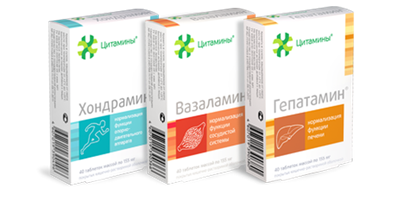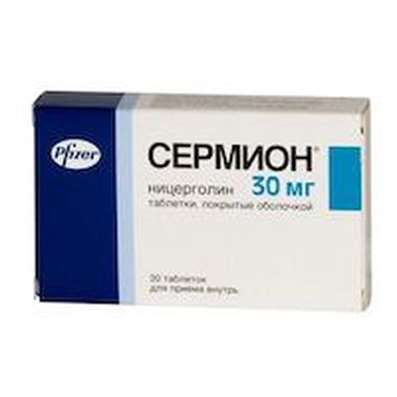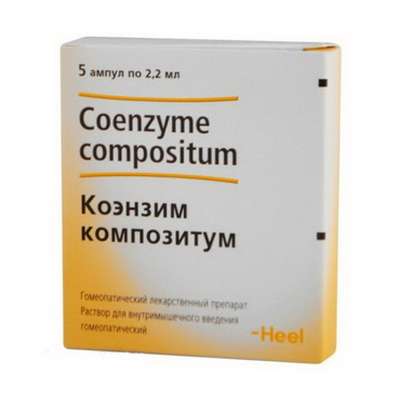Instruction for use: Cytoflavin tablets
I want this, give me price
tablets, coated with enteric shell
Trade name of the drug – Cytoflavin
Name of grouping: Inosine, Nicotinamide, Riboflavin, Succinic acid
Active substance: succinic acid - 0.300 g, inosine (Riboxinum) - 0.050 g nicotinamide - 0.025 g
riboflavin sodium phosphate (riboflavin) - 0.005 g;
Excipients:
povidone - 0.00810 g, calcium stearate - 0.00390 g
Hypromellose - 0.00360 g polysorbate 80 - 0.00040 g;
enteric coat: methacrylic acid and ethyl acrylate copolymer - 0.02902 g propylene glycol - 0.00291 g, E 122 - 0.00007 g
Description:
Round biconvex tablets coated red. On cross-section two layers are visible. The core tablets from yellow to yellow-orange.
Dosage Form: tablets, coated with enteric shell
Pharmacotherapeutic group: metabolic agent.
ATX code: N07XX.
Pharmacological Properties of CytoflavinPharmacodynamics
Pharmacological effects are caused by the combined action of a part of the drug cytoflavin components.
Succinic acid (SA) - the endogenous intracellular metabolite of the Krebs cycle, performing energosinteziruyuschuyu universal function in the cells of the body. With the participation of the coenzyme flavin adenine dinucleotide (FAD) succinic acid mitochondrial enzyme succinate dehydrogenase rapidly transformed into fumaric acid, and later in other metabolites of the citric acid cycle. It stimulates aerobic glycolysis and ATP synthesis in cells.
The final product of succinic acid metabolism in the Krebs cycle is carbon dioxide and water. Succinic acid improves tissue respiration due to electron transport activation in mitochondria.
Riboflavin (vitamin B2) is a flavin cofactor (FAD), activating suktsinadegidrogenazu and other redox reactions of the Krebs cycle. Nicotinamide (Vitamin PP) nicotinamide.
Nicotinamide in cells via a cascade of biochemical reactions, transformed into a form nikotinamidadeninnukleotida (NAD) and its phosphate (NADP), nicotinamide-dependent activating enzymes Krebs cycle required for stimulation of cellular respiration and ATP synthesis.
Inosine is a purine derivative, a precursor of ATP. It has the ability to activate a number of enzymes of the Krebs cycle by stimulating the synthesis of key enzymes, nucleotides: flavin adenine dinucleotide (FAD) and nicotinamide adenine dinucleotide (NAD).
Thus, all components are natural metabolites Cytoflavin body and stimulate tissue respiration. Metabolic energokorrektsiya, antihypoxic and antioxidant activity of the drug, which determine the pharmacological properties and therapeutic efficacy of the components, due to the complementary action of succinic acid, inosine, nicotinamide and riboflavin.
Pharmacokinetics
Citoflavin has high bioavailability.
Succinic acid ingestion penetrates from the gastrointestinal tract into the blood and tissue reactions taking part in energy metabolism and is completely degraded to end products of metabolism (carbon dioxide and water) after 30 minutes.
Inosine is well absorbed from the gastrointestinal tract. The time to reach maximum blood concentration - 5 hours average residence time in the blood - 5.5 hours, the equilibrium distribution of volume of about 20 liters. Inosine is metabolized in the liver to form inosine monophosphate, followed by its oxidation to uric acid. In small quantities excreted by the kidneys.
Nicotinamide is rapidly distributed in all tissues (the equilibrium volume of distribution of approximately 500 liters). The time to reach maximum blood concentration - 2 hours, the average retention time in the blood - 4.5 hours. Nicotinamide crosses the placenta and breast milk; metabolized in the liver with the formation of N-methylnicotinamide, excreted by the kidneys.
Riboflavin is rapidly absorbed from the gastrointestinal tract, unevenly distributed (the highest number in the myocardium, liver, kidney), is transformed into flavinadeninmononukleotid (FMN) and flavin adenine dinucleotide (FAD) in the mitochondria. It penetrates through the placenta and breast milk; excreted by the kidneys, mainly as metabolites.
Indications for Cytoflavin
In adults in the complex therapy:
- The consequences of cerebral infarction;
- Other cerebrovascular diseases (cerebral atherosclerosis, hypertensive encephalopathy);
- Neurasthenia (irritability, fatigue, loss of the ability to long-term mental and physical stress).
Contraindications for Cytoflavin
Individual intolerance of components.
Not recommended for use in children under 18 years of age due to lack of efficacy and safety data.
Precautions
Digestive diseases (erosion, ulcers of the stomach and / or duodenal ulcers, gastritis and duodenitis (in the acute stage), hypotension, nephrolithiasis, concomitant gout, hyperuricemia. If you have one of these diseases, before taking the drug should consult a doctor.
Pregnancy and breast-feeding
Do not take during pregnancy and lactation, due to the lack of clinical data on the efficacy and safety of the drug during this period.
Cytoflavin Dosage and Administration
Inside of 2 tablets 2 times a day with an interval between receptions of 8-10 hours. Tablets should be taken at least 30 minutes before a meal, without chewing, washing down with water (100 ml).
It is recommended taking the drug in the morning and day time (within 18 hours).
The duration of treatment of 25 days. Purpose of the course may repeat at intervals of not less than 1 month.
Side effect of Cytoflavin
Headache, pain or discomfort in the epigastric region. Allergic reactions such as skin redness and itching. Adverse reactions include: transient hypoglycemia, hyperuricemia, gout exacerbation of concomitant.
If any of these instructions side effects are compounded or you notice any other side effects not mentioned in the instructions, inform your doctor.
overdose
Information about the over dosage is absent.
Interaction
Succinic acid, nicotinamide and inosine are compatible with other drugs. Riboflavin reduces the activity of certain antibiotics (tetracycline, erythromycin, lincomycin), is incompatible with streptomycin. Ethanol, tricyclic antidepressants, tubular secretion blockers reduce the absorption of riboflavin, and thyroid hormones speed up his metabolism.
special instructions for Cytoflavin
In hypertensive disease may require adjustment of doses of antihypertensive drugs.
In patients with diabetes treated under the control of blood glucose concentration.
Perhaps the intense staining of urine yellow.
Cytoflavin no effect on: the ability to drive vehicles, work with moving machinery, the work of dispatchers and operators.
Release form of Cytoflavin
Tablets are coated with enteric shell
10 tablets in blisters of PVC film and aluminum foil for the packaging of a material or a combination based on the aluminum foil and aluminum foil for packing. In 5 or 10 contour cell package, along with instructions for use in a stack of cardboard.
Storage conditions of Cytoflavin
In the dark place at a temperature no higher than 25 ° C. Keep out of the reach of children.
Shelf life of Cytoflavin
2 years.
Do not use beyond the expiration date printed on the package.
Conditions of supply of Cytoflavin from pharmacies
On prescription.

 Cart
Cart





